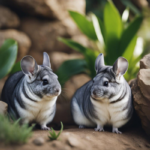We’ve all heard of dogs and cats, but how many of us can say we know much about chinchillas? Originally hailing from the mountainous regions of South America, chinchillas are increasingly popular as household pets.
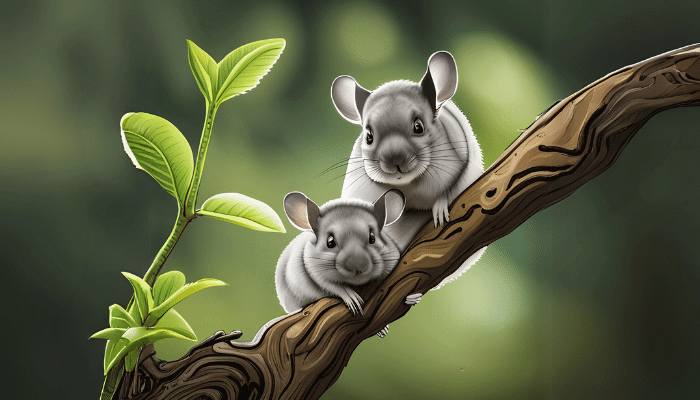
With their distinctive round ears and bushy tails, these furry rodents charm their way into people’s hearts. Yet, a key question many prospective owners often ask is: How big do chinchillas get? It’s a significant consideration, impacting the size of their enclosure, feeding routine, and overall care needs. Read on as we explore this in depth.
How Big Do Chinchilla Get?
Chinchillas, on average, reach a length of 9 to 15 inches, with their bushy tails adding 3 to 6 inches. These petite rodents may seem small, but their lively personalities and lush fur make them larger than life in the eyes of those who adore them.
Understanding the Growth Phases
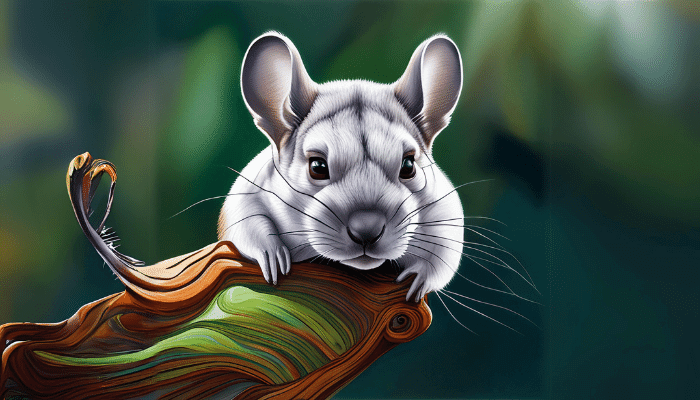
Baby Chinchillas
Curiosity often surrounds the size of baby chinchillas. How big do chinchilla get as infants? Well, newborn chinchillas, known as kits, typically weigh around 2 to 3 ounces and measure a mere 3 to 4 inches in length. It’s like holding a handful of fluff!
Adolescent Chinchillas
As chinchillas enter their adolescent phase, their growth becomes more noticeable. How big do chinchilla get during adolescence? At around six months, they can reach 6 to 8 inches in length, showcasing a significant increase in size compared to their baby days.
Adult Chinchillas
The pinnacle of chinchilla size is achieved when they reach adulthood. How big do chinchillas get as fully grown adults? On average, adult chinchillas measure 9 to 15 inches, with their tail adding an extra 3 to 6 inches. This size range may vary slightly depending on the specific chinchilla species.
Factors Influencing Chinchilla Size
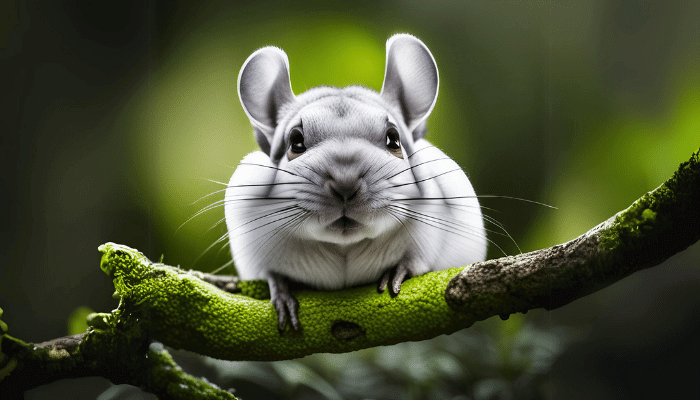
Genetics: The Size Code Unraveled
Chinchilla size is inherently tied to genetics. How big do chinchillas get based on their genetic makeup? While there’s a general size range, individual variations exist due to genetic factors. Some chinchillas may lean towards the smaller end, while others proudly flaunt a larger frame.
Nutrition: Feeding the Growth Spurt
The saying “you are what you eat” holds for chinchillas. How big do chinchilla get with a proper diet? A well-balanced diet rich in high-quality pellets, hay, and occasional treats contributes to healthy growth. Adequate nutrition is key to ensuring your chinchilla reaches its full-size potential.
Environmental Factors: Space Matters
Chinchillas are active creatures that thrive in spacious environments. How big do chinchillas get in captivity vs. the wild? In the wild, they may achieve slightly larger sizes due to increased physical activity. However, in captivity, providing a roomy cage and engaging play areas positively impact their overall well-being.
Environment and Stress: The Unseen Variables
Believe it or not, the environment and stress levels can impact a chinchilla’s growth. A calm and comfortable living environment promotes healthy growth, while stressors may hinder their development. Ensuring a stress-free space is essential for your chinchilla to reach its full-size potential.
Chinchilla Size Comparison: Breeds Unveiled
| Chinchilla Breed | Average Size | Distinctive Features |
|---|---|---|
| Standard Chinchilla | 9 to 15 inches (plus tail) | Dense, soft fur with a distinctive color pattern |
| Royal Persian Angora | 7 to 11 inches (plus tail) | Long, silky fur with a refined and regal appearance |
| Homestead Breed | 8 to 14 inches (plus tail) | Robust build, well-adapted to various climates |
Chinchilla Breeds: Unveiling Size Disparities
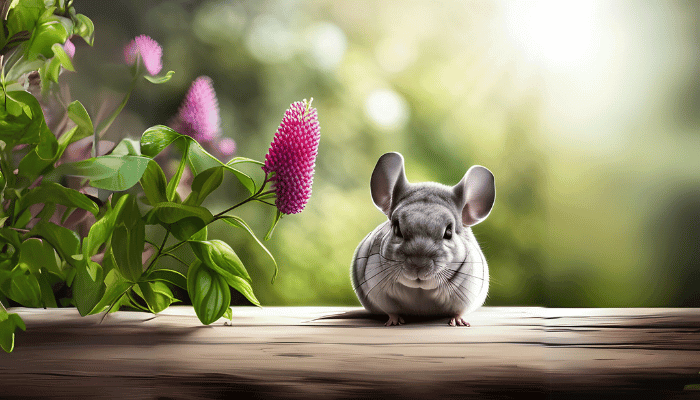
Exploring Chinchilla Species
Not all chinchillas are created equal. How big do chinchillas get across different species? There are several chinchilla species, each with its unique size characteristics. The three primary species Chinchilla lanigera, Chinchilla brevicaudata, and Chinchilla chinchilla—exhibit subtle differences in size.
Chinchilla Color Mutations
The world of chinchillas is adorned with various color mutations, each captivating in its own right. How big do chinchilla get, considering their color? Surprisingly, color doesn’t significantly impact size. However, it adds a delightful layer of diversity to the chinchilla kingdom.
Common Misconceptions Debunked

Myth: Giant Chinchillas Exist
Rumors about giant chinchillas occasionally surface. How big do chinchillas get in reality, dispelling the giant chinchilla myth? Despite the tales, there’s no evidence of chinchillas exceeding the standard size range. If you hear of a giant chinchilla, it’s likely a case of mistaken identity or a playful exaggeration.
Misconception: Smaller Chinchillas Are Less Healthy
Size doesn’t always correlate with health. How big do chinchilla get without compromising health? While some chinchillas may naturally be smaller, it doesn’t necessarily indicate health issues. Regular veterinary check-ups and a caring environment are key to ensuring your chinchilla’s well-being.
Conclusion
So, how big do chinchillas get? The answer lies in a combination of genetic factors, diet, and environmental conditions. While they may not reach towering heights, their unique charm and playful antics make them larger than life in the eyes of those fortunate enough to share their home with these endearing creatures.
Whether you’re considering a standard chinchilla or a more petite breed, providing love, care, and an enriching environment ensures your chinchilla will thrive and delight with its adorable presence. So, go ahead, embrace the fluffiness, and let your chinchilla’s size be just one aspect of the wonderful journey of companionship.
FAQs About Chinchilla Size

How fast do chinchillas grow?
Chinchillas experience their most rapid growth during the first six months of life. During this time, they can gain up to one inch per month. However, growth rates may vary among individuals.
Do Male and Female Chinchillas Differ in Size?
Sexual dimorphism is not prominent in chinchillas, with both males and females sharing similar size ranges. The disparities, if any, are subtle and more dependent on individual genetics than gender.
Can you predict a chinchilla’s final size as a baby?
While observing the size of a baby chinchilla may provide some indication, predicting its final size with absolute certainty is challenging. Genetic factors and overall health contribute to the final size.
Are there different sizes of chinchillas?
Yes, there are variations in size among different chinchilla breeds. The standard chinchilla breed tends to be larger than the more petite breeds like the Royal Persian Angora.
Does gender influence chinchilla size?
In general, male chinchillas are slightly larger than females. However, individual variations exist, and other factors play a more significant role in determining size.
How can I help my chinchilla grow to its full potential?
Providing a well-balanced diet, a comfortable living space, and regular veterinary check-ups are crucial for ensuring your chinchilla reaches its optimal size.
Do Male and Female Chinchillas Differ in Size?
Sexual dimorphism is not prominent in chinchillas, with both males and females sharing similar size ranges. The disparities, if any, are subtle and more dependent on individual genetics than gender.
Can Chinchillas Stunt Their Growth if Kept in Small Cages?
Yes, inadequate living space can potentially hinder a chinchilla’s growth and overall health. Providing a spacious and stimulating environment is crucial for their well-being.



